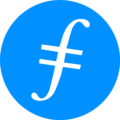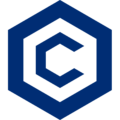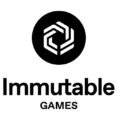Providers
What is GMX?
GMX is a decentralized exchange (DEX) for trading perpetual cryptocurrency futures with up to 50X leverage on popular cryptocurrencies like BTC, ETH and more. The platform launched in September 2021 as Gambit Exchange. To date, GMX has a total trading volume of over $130B and 283K total users, making it the leading derivatives DEX on Arbitrum and Avalanche.
GMX runs on the Arbitrum and the Avalanche blockchain. These ecosystems are connected to the exchange via Synapse — a cross-chain bridge.
What Is Hedera (HBAR)?
Hedera is the most used, sustainable, enterprise-grade public network for the decentralized economy that allows individuals and businesses to create powerful decentralized applications (DApps).
It is designed to be a fairer, more efficient system that eliminates some of the limitations that older blockchain-based platforms face — such as slow performance and instability.
It was funded through an initial coin offering (ICO) in August 2018 and first launched open access to its mainnet just over a year later in September 2019. As part of the ICO, investors were able to purchase the platform’s native utility token (HBAR) at the lowest possible pricing.
The HBAR token has a dual role within the Hedera public network.
First and foremost, HBAR the fuel that powers Hedera services, such as smart contracts, file storage and regular transactions. Second, it's used to help secure the network, since HBAR users can stake their tokens to assist with maintaining the integrity of the platform.
Hedera (HBAR) is the native cryptocurrency of Hedera Hashgraph, a platform that is positioned as an alternative to traditional blockchain technology and aims to excel in speed, efficiency and security.
Older blockchains tend to use a consensus mechanism like proof-of-work (PoW) to validate transactions, while younger blockchains opted for proof-of-stake (PoS). The Hedera Hashgraph system has a structure that was created from scratch particularly for the project. Hedera is based on a PoS model that is believed to increase the efficiency of transaction verification in the network, provide a high level of security, and protect the network from hacker attacks. Its ecosystem has the underlying hashgraph consensus algorithm and the global enterprise governing body.
Hedera Hashgraph is a distributed ledger technology (DLT). According to the project website, Hedera differs from other blockchains because it uses a new consensus algorithm called hashgraph. It intends to process and execute transactions faster, eliminate delays, and smooth out the TPS (transactions per second) indicator. Hashgraph is claimed to be an upgrade in transaction speed, cost, and scalability.
Core network services by Hedera:
Consensus Service (HCS). With HCS, clients send messages to the network to negotiate consensus timestamping and order. In this case, the state is stored offline, and users can define privacy and access control.
Hedera Token Service (HTS). Thanks to HTS, token creation and management are available to customers. It supports built-in tokenization.
The goal of Hedera’s hashgraph is to increase the speed of transactions. Moreover, the network is also focused on high-volume operations: micropayments, data integrity and tokenization.
Like the EVM, the Hedera network maintains a virtual machine that writes smart contracts in the Solidity programming language. On top of that, Hedera offers a set of built-in KYC and AML checks.
From a technical point of view, Hedera is a form of distributed ledger technology. It is a hashgraph, or consensus algorithm, where users agree on the order in which transactions should be performed. However, Hedera is not exactly a blockchain. It has its own distinctiveness and works differently. With hashgraph, all transaction branches are merged, no block equivalent is thrown away, and each is used to reach consensus.
One of the most noticeable features of the network is the Gossip-about-Gossip protocol. According to Dr. Leemon Baird, Hedera's inventor, within the system nodes randomly transmit data about themselves to other nodes via hashgraph using the Gossip protocol. Soon, all nodes in a cluster become familiar with each other. Then a certain data structure is formed. It consists of a payload of transactions, a timestamp, a digital signature, and hashes to the previous structures.
HBAR is Hedera's native token that powers applications on the Hedera network. HBAR is utilized to pay for network services, transaction fees, in-app payments and micropayments. Developers can pay network fees with HBAR tokens, namely: work with smart contracts, file storage and currency exchange. HBAR is used to incentivize and pay network nodes.
Hedera Hashgraph has a decentralized governance system that is set apart. All critical decisions about pricing policy, software updates, and wealth management are made by the Governing Council.
What Is Filecoin (FIL)?
Filecoin is a decentralized storage system that aims to “store humanity’s most important information.” The project raised $205 million in an initial coin offering (ICO) in 2017, and initially planned a launch date for mid-2019. However, the launch date for the Filecoin mainnet was pushed back until block 148,888, which is expected in mid-October 2020.
The project was first described back in 2014 as an incentive layer for the Interplanetary File System (IPFS), a peer-to-peer storage network where users pay for data storage and distribution services in $FIL. Filecoin is open protocol and backed by a blockchain that records commitments made by the network’s participants, with transactions made using FIL, the blockchain’s native currency. The blockchain is based on both proof-of-replication and proof-of-spacetime.
Filecoin is open-source and decentralized, which means that all governance is in the hands of the community. On the Filecoin platform, developers have the opportunity to create cloud file storage services like Dropbox or iCloud. Anyone can join Filecoin and start storing their data or earn money by providing space for someone else's funds. The creators of Filecoin opted for their blockchain technology to run the network and their token with their own consensus.
$FIL is the native currency of Filecoin that powers the entire network and all processes. Clients pay for transactions in FIL tokens. Miners place FIL as collateral, guaranteeing their services.
The developers claim that Filecoin solves the problem of inefficient file storage and retrieval. Customers can find the right solution with an efficient set of tools and its core development, IPFS.
FDUSD is a 1:1 USD-backed Stablecoin.
FDUSD provides users with a stable digital currency that is backed by fiat currency, which can help reduce the volatility in the cryptocurrency market. This makes it more appealing to investors and merchants, who are wary of the volatility associated with traditional cryptocurrency price fluctuations.
FDUSD can improve the efficiency of financial transactions by reducing transaction costs and improving the speed and accuracy of these transactions in a secure manner. FDUSD can also facilitate cross-border transactions and reduce the fees and processing times associated with traditional methods.
The stability of a fiat-backed stablecoin is preserved through the maintenance of a 1:1 peg with the corresponding fiat currency. This is achieved by meticulously ensuring that the value of the reserve assets held matches or exceeds the total quantity of outstanding stablecoins. In essence, the reserves serve as a guarantee for the issuer's commitment to redeem the stablecoin at its nominal value. It is important to note that FDUSD operates under rigorous custodial arrangements.
Furthermore, the FDUSD can be programmed, allowing financial contracts, escrow, and insurance without intermediaries.
Cronos (CRO) is the native cryptocurrency token of Cronos Chain — a decentralized, open-source blockchain developed by the Crypto.com payment, trading and financial services company.
Cronos Chain is one of the products in Crypto.com’s lineup of solutions designed to accelerate the global adoption of cryptocurrencies as a means of increasing personal control over money, safeguarding user data and protecting users’ identities. The CRO blockchain serves primarily as a vehicle that powers the Crypto.com Pay mobile payments app.
In the future, Crypto.com plans to expand the reach of the CRO platform to power its other products as well.
CRO went live in November-December 2018.
What Is Terra 2.0 (LUNA)?
Terra (LUNA) is a public blockchain protocol that emerged from Terra Classic. Terra Classic is home to the algorithmic stablecoin TerraClassicUSD (UST). It's now-renamed LUNC token collateralized UST, which crashed in a bank run in May 2022. That devalued LUNA to virtually zero and caused a launch of a new chain — resulting in Terra Classic and Terra. Read a full breakdown of the Terra crash here.
The development of Terra Classic launched in January 2018 and the blockchain launched in April 2019. It attempted to combine the price stability and wide adoption of fiat currencies with the censorship-resistance of Bitcoin (BTC) and offer fast and affordable settlements through its UST stablecoin. Terra Classic offered stablecoins pegged to the U.S. dollar, South Korean won, Mongolian tugrik, and the International Monetary Fund's Special Drawing Rights basket of currencies.
The new Terra blockchain continues the legacy of Terra Classic without the UST stablecoin. It will keep building with the help of the LUNA community dubbed “LUNAtics” and evolve the world-class UX and UI that brought Terra Classic up to second place in total value locked (TVL) at its peak. Many DApps have agreed to migrate to Terra to continue their functionality.
What Is Immutable (IMX)?
Immutable positions itself as the first layer-two scaling solution for NFTs on Ethereum. According to Immutable, its blockchain does away with Ethereum’s limitations like low scalability, a poor user experience, illiquidity, and a slow developer experience. Instead, users benefit from instant trading and massive scalability while enjoying zero gas fees for minting and trading NFTs without compromising user or asset security. To achieve that, Immutable is built with STARK zk-rollups, a technology that Vitalik Buterin considers Ethereum to be “all-in on.”
Thanks to this technology, users will be able to create and distribute assets like ERC-20 and ERC-721 tokens on a massive scale. Chris Clay, the game Director of Gods Unchained, a project already building on Immutable, stated that Immutable allows Gods Unchained to implement a new meta-system that was previously impossible. In this fashion, Immutable aims to create a world-class experience for users and developers alike.
What Is Lido DAO (LDO)?
Lido DAO is a decentralized autonomous organization (DAO) which provides staking infrastructure for multiple blockchain networks.
Most notably, the platform provides a liquid staking solution for Ethereum, allowing users to stake their ETH and receive stETH (Lido staked ETH) tokens in exchange, which represent the user's staked ETH and staking rewards.
Lido DAO is secured by a mix of decentralized governance, audited code and smart contracts. The Lido protocol runs on Ethereum with help from smart contracts that process user deposits and distribute staking rewards, among other functions. Several third-party security firms have audited Lido’s smart contracts in order to identify and address potential vulnerabilities.
The platform’s native token is LDO - which also serves as the governance token for Lido DAO. Holders can participate in governance proposals and vote on key decisions such as board adjustments, new integrations and platform updates. LDO holders have the right to determine the development and operation of the platform.
Lido currently supports staking for Ethereum and Polygon only with the recent sunsetting of Solana.
What Is Casper (CSPR)?
Launched on mainnet on March 30, 2021, Casper is the first live proof-of-stake (PoS) blockchain built off the Casper CBC specification. The Casper platform is designed to boost the adoption of blockchain technology, smart contracts, and DApps on a global scale.
With its future-proof architecture, Casper is designed to ensure the platform is continually developed according to the evolving needs of its users, and that it’s maximally accessible to developers of all backgrounds. As per the official whitepaper, Casper is optimized to suit both enterprise and developer needs. Casper’s mission is to usher in a new era for Web3, as demand for intuitive, interconnected services continues to grow across the board. Casper does so by solving the adoption trilemma: offering enterprise-grade security, scalability and decentralization all within the same blockchain protocol.
Celestia (TIA) is the first modular blockchain network that enables anyone to easily deploy their own blockchain with minimal overhead. Celestia scales by rethinking blockchain architecture from the ground up. It is a minimal blockchain that decouples execution from consensus by introducing a new primitive, data availability sampling. Since Celestia does not impose any execution or settlement constraints, developers are free to define their own execution and settlement environments. This unlocks new, unrealized possibilities for builders and developers.
Celestia is a departure from the status quo of monolithic blockchains. Monolithic blockchains face scaling difficulties because they perform all core functions of a blockchain such as processing transactions, ensuring that transactions are correct, and getting network nodes to agree on both the validity and ordering of transactions. Modular blockchains introduced the notion of decoupling consensus from the execution of transactions, thus achieving greater scalability without loss of security or decentralisation.
A modular approach to blockchains opens up a world of new possibilities. Experimentation becomes much easier as new application specific or general purpose blockchains can deploy to Celestia and immediately inherit security from Celestia’s validator set. Modular blockchains enable control over the rules of an application through sovereignty because developers can make alterations to the tech stack without permission from outside applications.










